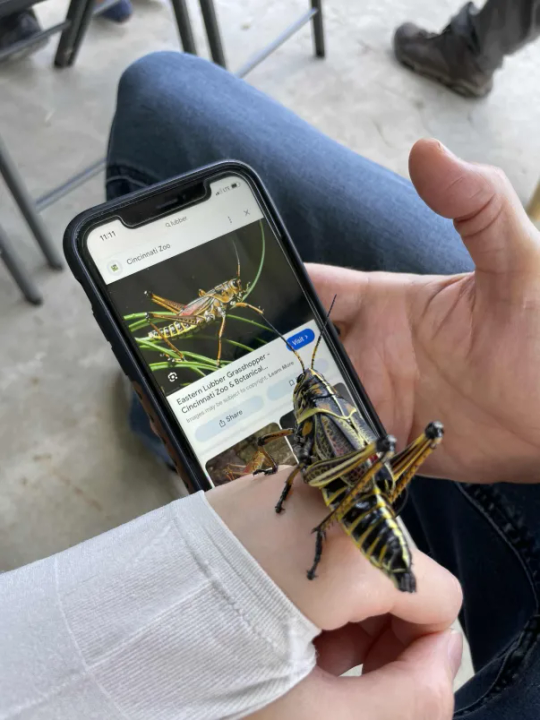bugkeeping
1K posts
@mellifexfarm's bug and photography sideblog. texas master naturalist. she/her youtube
Don't wanna be here? Send us removal request.
Text

A karoo rainspider (Palystes karooensis) shows off its threat display at Golden Pagoda Ridge, South Africa
by Gigi Laidler
226 notes
·
View notes
Text
Meat-Eating Caterpillars: less than 1% of all known lepidoptera (moths and butterflies) are carnivorous, and even fewer are known to hunt and kill their prey; these are just a few of the exceptions

Above: a carnivorous pug moth caterpillar, Eupithecia orichloris, ambushing a fly
Lepidopteran predators are extremely rare, but they do exist. Some of the most interesting examples include the carnivorous pug moth caterpillars of the genus Eupithecia, the ant-eating casebearer, the Hawaiian snail-eating moth, and the bone-collector caterpillars of the genus Hyposmocoma. Curiously, almost all of the species on this list are endemic to Hawaii.

Above: Eupithecia orichloris
The carnivorous pug moth, Eupithecia orichloris, is probably the most famous predatory caterpillar in the world, thanks to the striking and unusual method by which it captures its prey -- this species is an ambush predator that often disguises itself as a twig and then pops up out of nowhere, violently plucking its prey from the foliage. Eupithecia is the only lepidopteran genus that is known to contain ambush predators, which makes this behavior seem even more striking.
The ant-eating casebearer, Ippa conspersa, is another carnivorous caterpillar that feeds on ants and other insects (both as a predator and as a scavenger). This species uses silk, sand, and other fine debris to build a flat, peanut-shaped "shell" around its body, and the "shell" acts as a kind of camouflage, allowing the caterpillar to sneak into ant nests and hunt.

Above: the ant-eating casebearer and its unique "shell"
As its name implies, the ant-eating casebearer often feeds on ants, but it has also been known to eat cockroaches and other insects.

Above: an ant-eating casebearer feeding on a cockroach
Hyposmocoma molluscivora, commonly known as the Hawaiian snail-eating moth, is a casebearing caterpillar that feeds on live snails. It uses strands of silk to immobilize its prey, tethering the snail in place so that it can climb into the victim's shell and feed on the soft flesh within. The caterpillars of this genus are the only lepidopterans that are known to feed on molluscs; all of the other predatory caterpillars feed on arthropods (insects and arachnids).

Above: this photo shows a Hawaiian snail-eating moth using strands of silk to hold its prey in place
The genus Hyposmocoma also contains the predatory "bone-collector" caterpillars, which cover themselves with the body parts of other insects and arachnids, often scavenging the leftover pieces from spiderwebs. They carefully trim each piece of exoskeleton and then arrange them all together onto a portable silk mesh.
The caterpillars often live side-by-side with spiders, as they opportunistically feed on the insects that they find trapped in spiderwebs, and their macabre body ornaments likely serve as camouflage; they allow the caterpillar to avoid being detected or attacked by spiders.

Above: a bone-collector caterpillar covered in the body parts of other insects, including a large weevil head that is clearly visible near the center, several ant heads, a fly's leg, the abdomen of a bark beetle, a wing, and several pieces of antennae, among other things
Sources & More Info:
Journal of the Lepidopterists' Society: Predatory and Parasitic Lepidoptera
GeoJournal: Behavior, Biogeography, and Conservation of Eupithecia in the Hawaiian Islands
Korean Journal of Applied Entomology: The First Record of the Myrmecophilous Tineid Moths of Genus Ippa in Korea
Nature: Caterpillars Eat Snails Out of House and Home
Science: Web-Spinning Caterpillar Stalks Snails
NBC: Hawaiian Caterpillars Hunt like Spiders
National Geographic: This Camouflaged Critter Wears Severed Insect Body Parts like a Coat
Scientific American: Carnivorous "Bone Collector" Caterpillars Wear Corpses as Camouflage
Science: Hawaiian Caterpillar Patrols Spiderwebs Camouflaged in Insect Prey's Body Parts
3K notes
·
View notes
Text
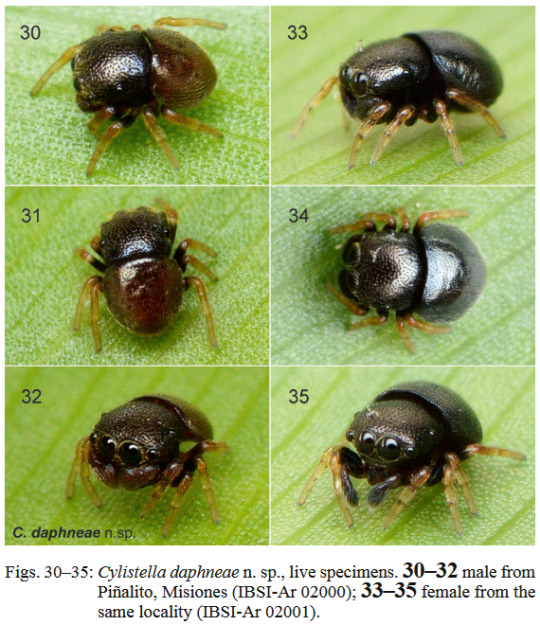
(source: Rubio, Baigorria & Stolar, 2025. Spiders of the genus Cylistella (Salticidae: Simonellini) from Argentina.)
According to the authors' description of new species C. daphneae, the subtle difference in hue between the male (left) and female (right) specimens captured in these photographs is representative, with males primarily occupying the orange-brown end of the range while females exhibit a true black.
The tiny jumpers of this genus are thought to be mimics of smaller Coccinellidae (the ladybird beetle family).
2K notes
·
View notes
Photo
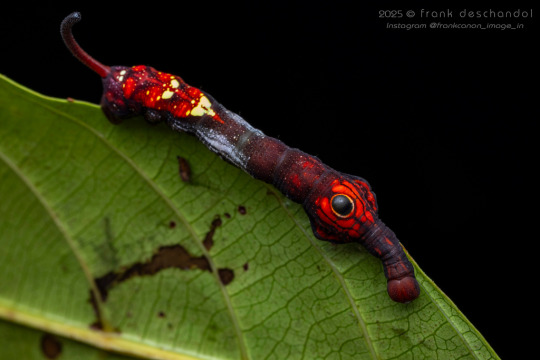
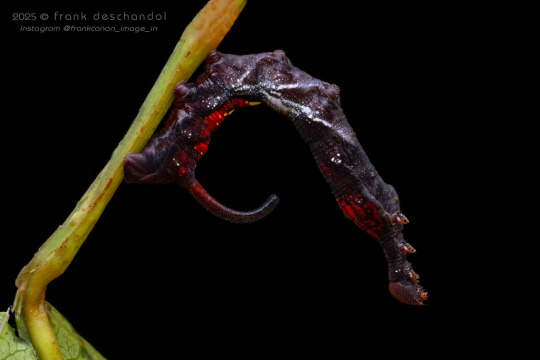
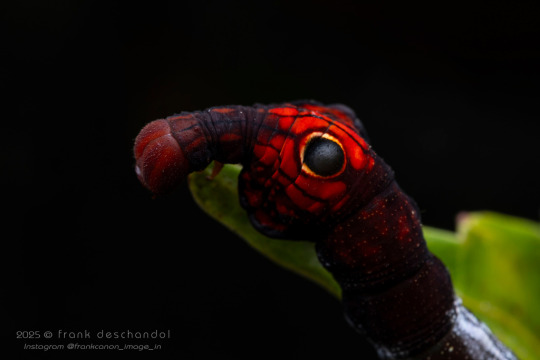
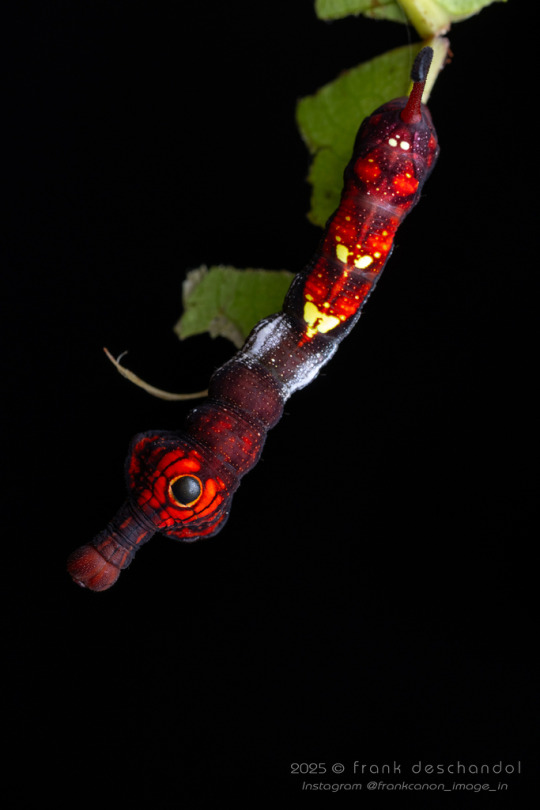

Philippine sphinx moth, Elibia linigera, Sphingidae
Photos 1-4 (caterpillar) by frank-deschandol // Instagram
Shared with permission; do not remove credit or re-post!
Photo 5 (adult moth) by albertkang
1K notes
·
View notes
Text
If anyone wants to know what a leopard seal sounds like 🦷🩸
52K notes
·
View notes
Text
Video by me and Ainsley Seago trying to explain the important work insect taxonomists do
1K notes
·
View notes
Text
Enamored by this picture of a legless lizard from georgian reptile fb group

21K notes
·
View notes
Video
Baeus sp - spider egg parasitoid wasp by Thomas Shahan
203 notes
·
View notes
Text

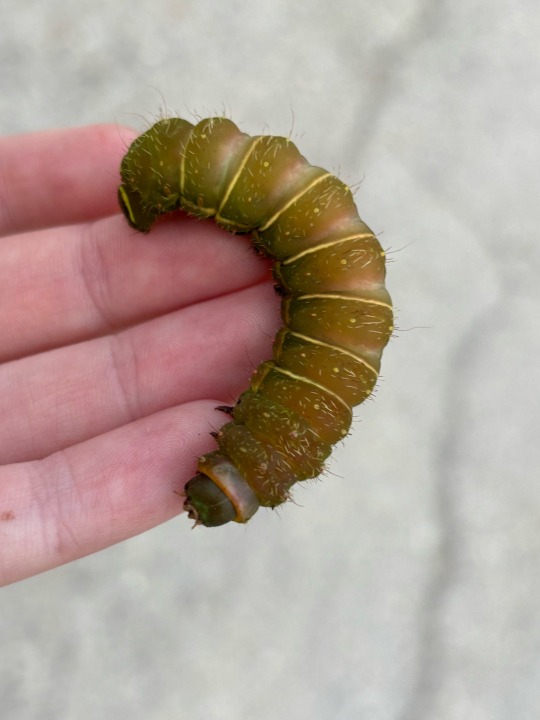
fat worm season
2K notes
·
View notes
Text


these are the miserable remains of a chestnut weevil (Curculio elephas) who will never again feel the joy of a freshly drilled acorn after unspeakable atrocities were perpetrated upon her by me


this is her thirty seconds later. the atrocities that she miraculously recovered from included "being gently scooped up from a branch"
(September 1st, 2024)
13K notes
·
View notes
Text


Izatha peroneanella / green lichen tuft moths have been showing up lately 💚
1K notes
·
View notes
Text
The Republicans have decided we no longer need bees and are defunding the USGS Bee Lab. Please tell your friends, your representatives, local beekeepers, crafting clubs, your classmates, and everyone who has ever seen a bee that this is happening and that the Republicans are behind it. Scream about this. We in the professional bug world make fun of the bee people for having some of the only consistent funding and support in the whole field, but now even that is going away. Write it on your car. Tell someone at the store. Email your professor. Make a tiktok. Draw it on the sidewalk. Do NOT let them sneak this by.
10K notes
·
View notes


